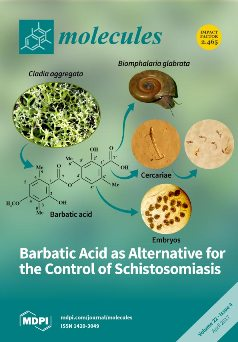Verproside, an active iridoid glycoside component of Veronica species, such as
Pseudolysimachion rotundum var.
subintegrum and
Veronica anagallis-aquatica, possesses anti-asthma, anti-inflammatory, anti-nociceptive, antioxidant, and cytostatic activities. Verproside is metabolized into nine metabolites in human hepatocytes: verproside glucuronides (
M1,
M2)
[...] Read more.
Verproside, an active iridoid glycoside component of Veronica species, such as
Pseudolysimachion rotundum var.
subintegrum and
Veronica anagallis-aquatica, possesses anti-asthma, anti-inflammatory, anti-nociceptive, antioxidant, and cytostatic activities. Verproside is metabolized into nine metabolites in human hepatocytes: verproside glucuronides (
M1,
M2) via glucuronidation, verproside sulfate (
M3) via sulfation, picroside II (
M4) and isovanilloylcatalpol (
M5) via
O-methylation,
M4 glucuronide (
M6) and
M4 sulfate (
M8) via further glucuronidation and sulfation of
M4, and
M5 glucuronide (
M7) and
M5 sulfate (
M9) via further glucuronidation and sulfation of
M5. Drug-metabolizing enzymes responsible for verproside metabolism, including sulfotransferase (SULT) and UDP-glucuronosyltransferase (UGT), were characterized. The formation of verproside glucuronides (
M1,
M2), isovanilloylcatalpol glucuronide (
M7), and picroside II glucuronide (
M6) was catalyzed by commonly expressed UGT1A1 and UGT1A9 and gastrointestinal-specific UGT1A7, UGT1A8, and UGT1A10, consistent with the higher intrinsic clearance values for the formation of
M1,
M2,
M6, and
M7 in human intestinal microsomes compared with those in liver microsomes. The formation of verproside sulfate (
M3) and
M5 sulfate (
M9) from verproside and isovanilloylcatalpol (
M5), respectively, was catalyzed by SULT1A1. Metabolism of picroside II (
M4) into
M4 sulfate (
M8) was catalyzed by SULT1A1, SULT1E1, SULT1A2, SULT1A3, and SULT1C4. Based on these results, the pharmacokinetics of verproside may be affected by the co-administration of relevant UGT and SULT inhibitors or inducers.
Full article






